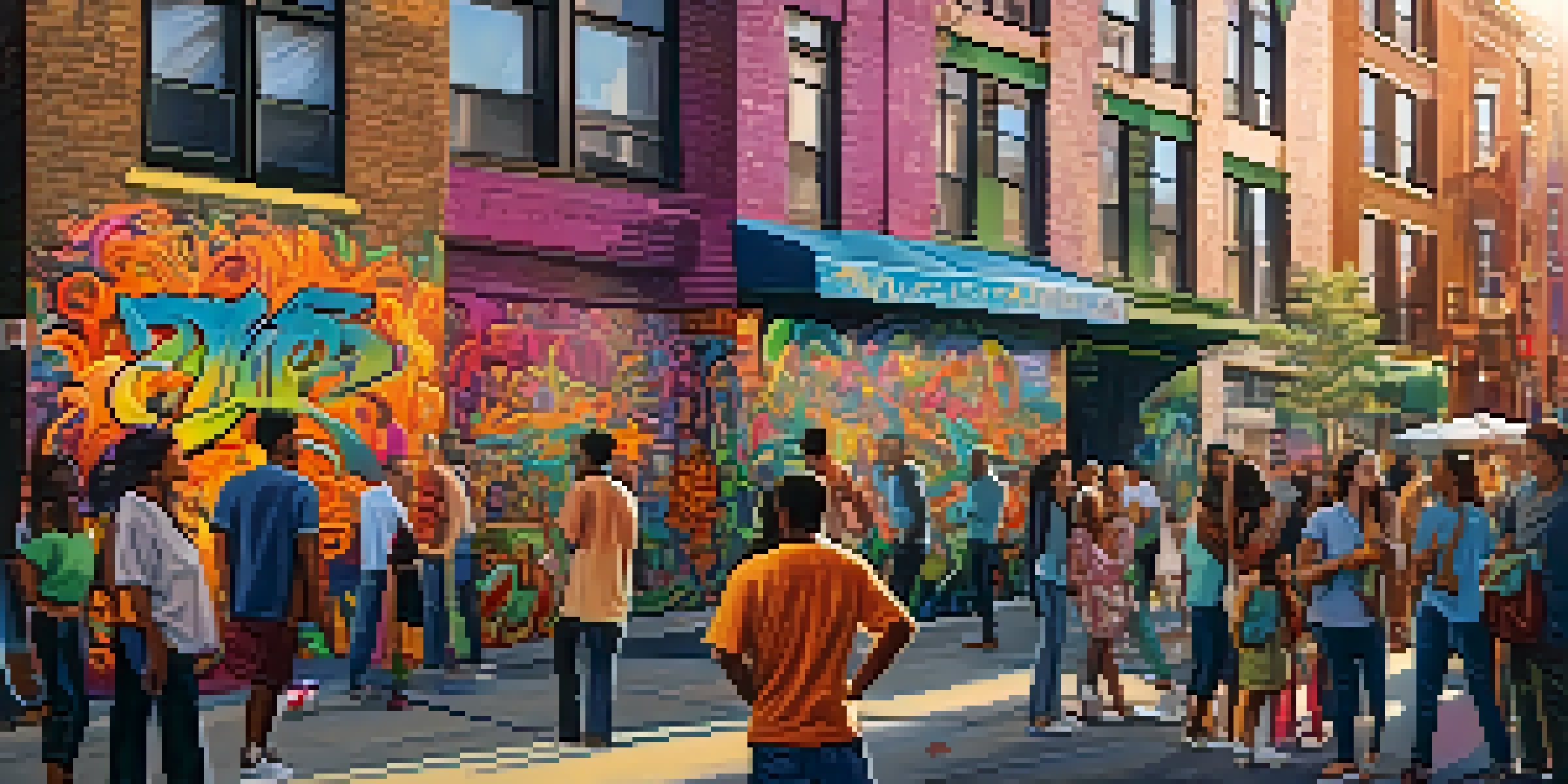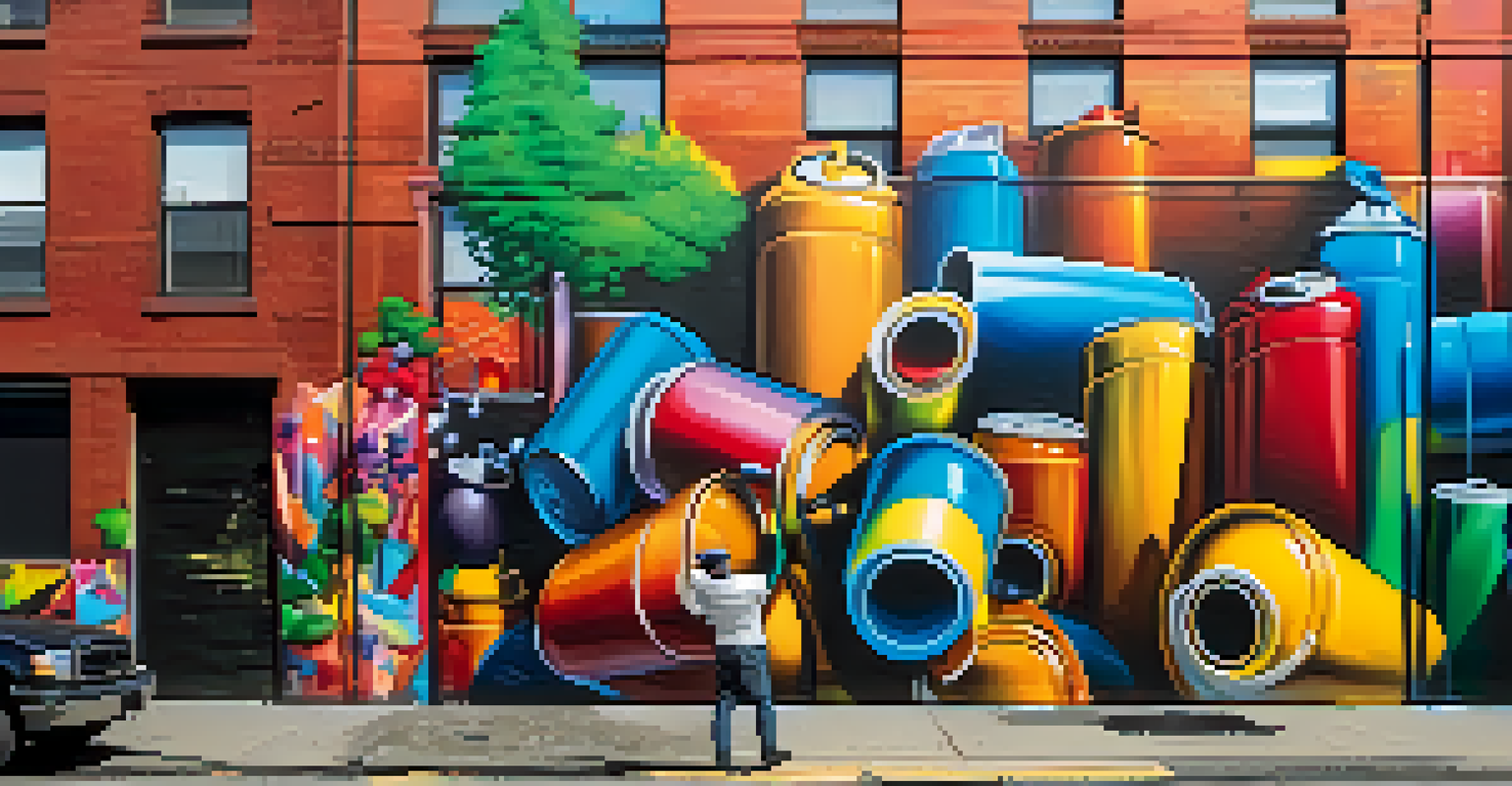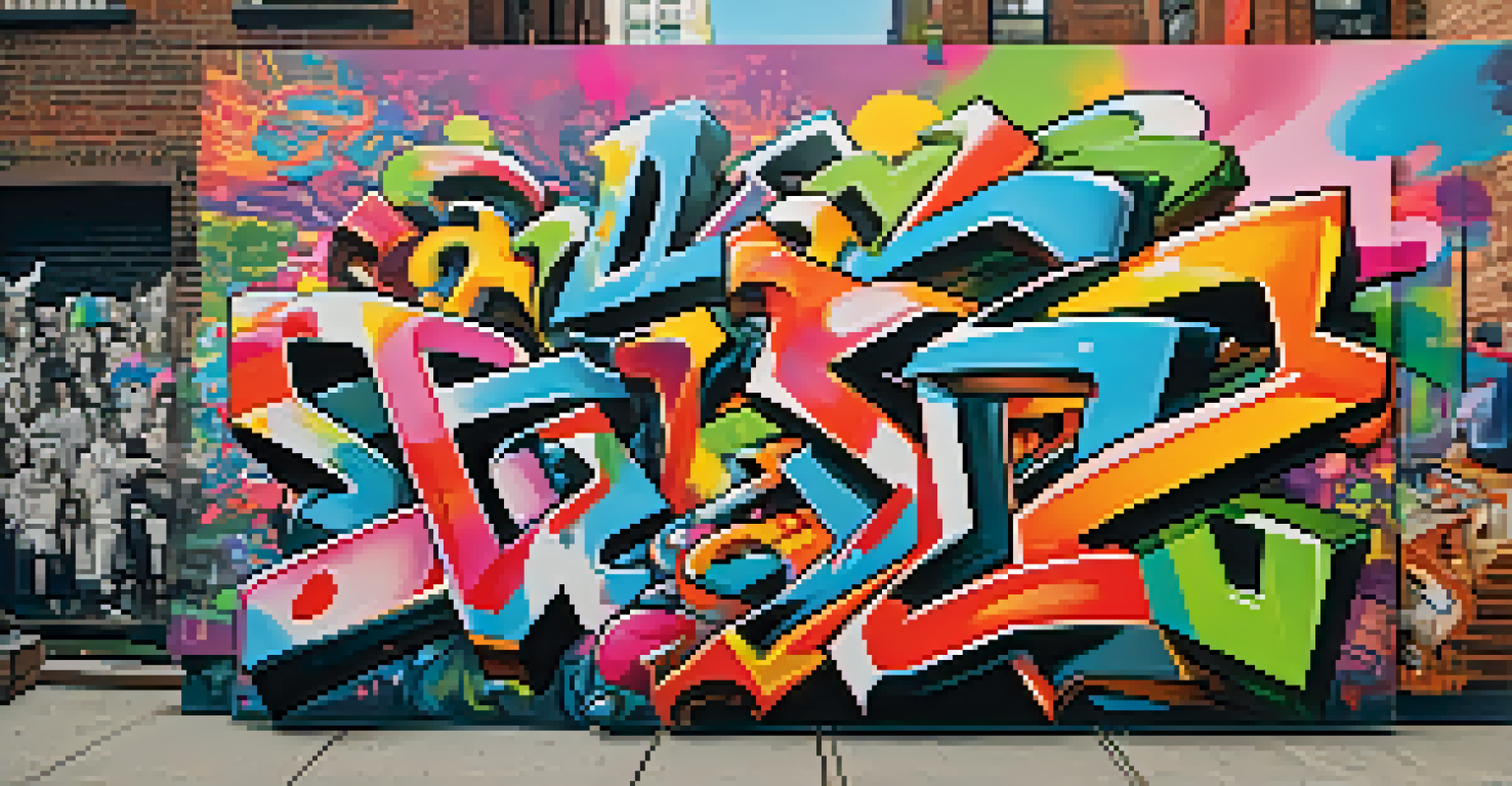Graffiti Art in NYC: From Vandalism to Valued Expression

The Origins of Graffiti in New York City
Graffiti in New York City has roots that trace back to the late 1960s, when artists began tagging their names on subway cars and city walls. This was more than just a rebellious act; it was a form of self-expression for marginalized voices seeking visibility. The vibrant, chaotic energy of the city fueled this art form, making it an integral part of NYC's urban landscape.
Graffiti is one of the last great public art forms. It's a form of expression that allows artists to communicate with their community in a visceral way.
In those early days, graffiti was often dismissed as mere vandalism, but for many, it was a way to reclaim public spaces. Artists like Taki 183 and Jean-Michel Basquiat emerged, turning their tags into symbols of identity and community. This transformation from simple signatures to intricate artworks marked the beginning of graffiti's evolution.
As the 1970s rolled in, graffiti began to capture the attention of the media, sparking debates over its legitimacy. It was still viewed largely as a crime, yet it started to gain recognition as a cultural movement. This tension between vandalism and artistry set the stage for what was to come.
The Rise of Graffiti Artists and Street Culture
By the late 1970s and early 1980s, graffiti artists began to emerge as key figures in the street culture of New York City. This era saw the birth of iconic styles, like wildstyle and bubble letters, which showcased the creativity and skill behind the practice. Artists started to experiment with colors and techniques, making their work even more visually striking.

Street culture became a vibrant tapestry, woven together by music, dance, and art. The hip-hop movement, which included breakdancing and DJing, provided a backdrop for graffiti artists to thrive. This connection between various forms of expression helped to legitimize graffiti as an important aspect of urban culture.
Graffiti as Urban Expression
Graffiti in New York City evolved from a form of vandalism to a legitimate art movement, showcasing the voices of marginalized communities.
As more artists gained recognition, they began to collaborate, creating murals that adorned walls across the city. These large-scale pieces not only beautified neighborhoods but also told stories of the communities they represented. Graffiti was no longer just tagging; it became an art form that celebrated identity and heritage.
The Shift Towards Recognition and Acceptance
As the 1990s approached, the perception of graffiti began to shift significantly. Galleries started to feature graffiti artists, bringing their work into the mainstream art world. This newfound recognition was both a blessing and a curse, as it raised questions about authenticity and commercialization.
Art is not a thing; it is a way. The way is through life, through living, through experiencing the world.
Street art festivals and competitions began to pop up, showcasing local talent and attracting international artists. Events like the Bushwick Collective in Brooklyn turned neighborhoods into open-air galleries, celebrating creativity while also driving tourism. This shift helped validate graffiti as a legitimate form of artistic expression.
However, this recognition came with challenges. Some artists struggled with the balance between maintaining their street credibility and gaining commercial success. The question lingered: could graffiti remain true to its roots while also being celebrated in galleries?
The Role of Technology in Graffiti Art
In the digital age, technology has profoundly influenced graffiti art. Social media platforms like Instagram have become vital for artists to showcase their work and connect with a broader audience. This visibility allows for greater appreciation but also invites criticism and theft of ideas.
Digital tools, such as graphic design software, have enabled artists to experiment with their styles before hitting the streets. This fusion of traditional techniques with modern technology has given rise to new forms of graffiti, including augmented reality and virtual installations. The possibilities seem endless, blurring the lines between street art and digital expression.
Cultural Impact of Graffiti
The art form not only beautifies neighborhoods but also addresses social issues, fostering a sense of community and identity among residents.
While technology offers new opportunities, it also raises questions about authenticity. As artists navigate the evolving landscape, they must consider how to stay true to their message in a world that is increasingly focused on likes and shares.
The Impact of Graffiti on NYC Communities
Graffiti has always been a reflection of the communities it inhabits, often addressing social issues and local narratives. Many artists use their platforms to comment on topics like gentrification, inequality, and identity. These powerful messages resonate deeply with local residents and help foster a sense of belonging.
Murals can transform neglected spaces into vibrant community hubs, sparking pride and engagement among residents. Projects like the Harlem Art Park and the Lower East Side's murals encourage community involvement, highlighting the importance of art in urban revitalization. This engagement helps bridge gaps and unite diverse groups.
However, not everyone sees graffiti as a positive force. Some argue that it can contribute to the perception of disorder in neighborhoods. Balancing the artistic value of graffiti with community concerns remains an ongoing conversation among residents, artists, and city officials.
The Future of Graffiti in New York City
As graffiti continues to evolve, its future in New York City remains vibrant and unpredictable. New generations of artists are emerging, each bringing fresh perspectives and innovative styles. This constant renewal keeps the art form alive and relevant, as it adapts to changing cultural landscapes.
The ongoing dialogue about graffiti's place in society will also shape its future. As cities grapple with issues of public space and expression, artists must navigate a complex terrain of legality and acceptance. This tension between rebellion and recognition will likely define the next chapter of graffiti art.
Future of Graffiti and Technology
As graffiti artists embrace technology, they navigate the complexities of maintaining authenticity while adapting to modern expressions and platforms.
Ultimately, graffiti is more than just paint on a wall; it's a living testament to the city's spirit. As long as there are stories to tell and voices to amplify, graffiti will continue to thrive as a valued form of expression in NYC.
Conclusion: A Valued Form of Expression
Graffiti art in New York City has undergone a remarkable transformation from its origins as vandalism to a celebrated form of artistic expression. This evolution reflects broader societal changes and the resilience of marginalized voices. The journey of graffiti artists mirrors the city's dynamic spirit, showcasing creativity in the face of adversity.
As we look to the future, it's essential to recognize graffiti's role in shaping urban culture. It serves as a powerful medium for social commentary and community engagement, contributing to the rich tapestry of New York City life. Embracing this art form means acknowledging the stories it tells and the voices it represents.

In the end, graffiti is not just about the art itself; it's about the conversations it sparks and the connections it fosters. As graffiti continues to evolve, it remains a vital part of NYC's cultural landscape, proving that even in the most unexpected places, beauty and meaning can flourish.